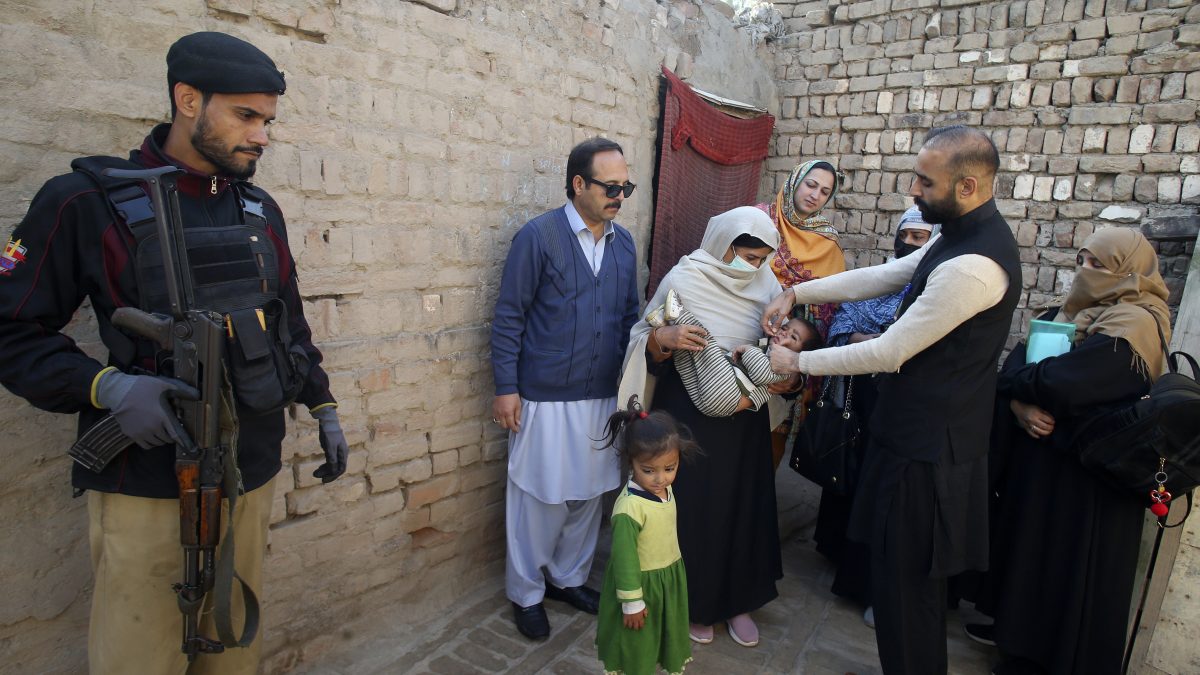Environmental samples collected from 21 districts in Pakistan have tested positive for wild poliovirus type 1 (WPV1). According to Pakistani news outlet Dawn, the samples were collected from Muzaffarabad, Dera Bugti, Hub, Khuzdar, Noshki, Nasirabad, Usta Mohammad, Zhob, Lasbela, Islamabad, Charsadda, Peshawar, Swabi, Tank, Bahawalpur, D.G. Khan, Jhang, Lahore, Multan, Rahimyar Khan and Karachi East. An official from the Regional Reference Laboratory for Polio Eradication at the National Institute of Health (NIH) in Pakistan said that the results indicate the presence of the virus in these districts.
The fresh results came a week after environment samples from 26 other Pakistani districts also tested positive for WPV1. The samples were collected from multiple sewages from these districts, raising alarm among the health officials about the spreading of the virus. It is pertinent to note that Pakistan is one of the last two nations in the world along with Afghanistan where polio continues to remain an endemic.
The officials assured that the country is trying to respond to a “significant resurgence of WPV1." “Last year, the country reported 73 cases of the disease. Of these, 27 are from Balochistan, 22 from Khyber Pakhtunkhwa, 22 from Sindh and one each from Punjab and Islamabad,” they furthered.
Why Pakistan is struggling to get rid of polio
Despite several global initiatives in the country, Pakistan has failed to take control of the crippling disease, which is extremely common among the children of the country. Challenges such as security issues, vaccine hesitancy, and misinformation have slowed any sort of progress in the endeavour to eradicate the disease.
Earlier this week, the authorities launched a nationwide polio vaccination campaign, which is scheduled to be ending tomorrow (Monday). Last month, several global experts and organisations which have been working to eradicate the disease met the Pakistani government in Islamabad.
The delegation reviewed how Pakistan is attempting to eradicate the disease. According to the Pakistan Polio Eradication Programme, the three-day meeting of the Technical Advisory Group brought together experts from the WHO, Unicef, CDC, Gates Foundation, Rotary International, Gavi, and USAID.
Impact Shorts
More ShortsThe officials said that the global organisation assured that adequate support would be given to polio vaccine teams operating in Pakistan. They agreed that full immunisation coverage, especially in the most affected areas, was crucial to eradicating polio in 2025. However, the recent results from the sample collection paint a grim picture in this regard.
Security concerns
The lack of security in Pakistan remains one of the major hindrances for health officials as they struggle to administer vaccination drives across the country. Earlier this week, a police officer assigned to protect health workers during Pakistan’s first polio vaccination campaign of the year was shot and killed by unidentified gunmen.
The attack took place in Jamrud, a district in Khyber Pakhtunkhwa province. Militant groups in these regions have long opposed these campaigns, falsely claiming they are part of a Western conspiracy to sterilize children.
A similar incident took place in December last year when gunmen targeted vaccination teams in northwestern districts during a nationwide campaign against the paralytic poliovirus. The attackers killed one health worker and two police officers.
The safety of health workers in the country has remained a persistent issue in Pakistan. Since the 1990s, over 200 polio workers and police officers have lost their lives in numerous militant attacks. Pakistani authorities believe that the Tehrik-e-Taliban Pakistan (TTP) and its breakaway factions are behind these incidents. Lack of awareness and education about how important these vaccination campaigns are remains a major reason behind these attacks.
These instances of violence indicate that while Pakistani leadership remains busy in political tussles and turmoil within the factions, children of the country struggle with the debilitating disease.
)